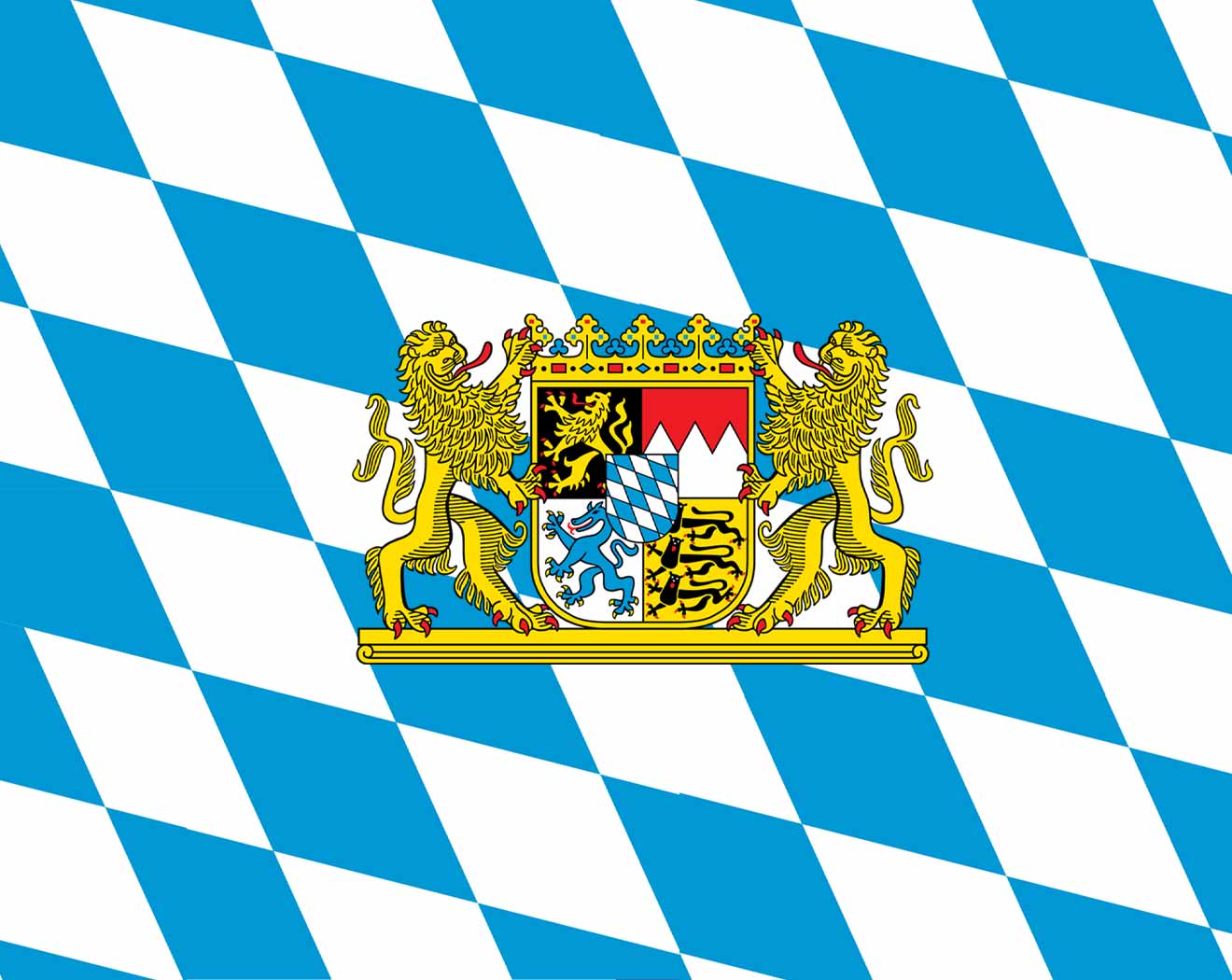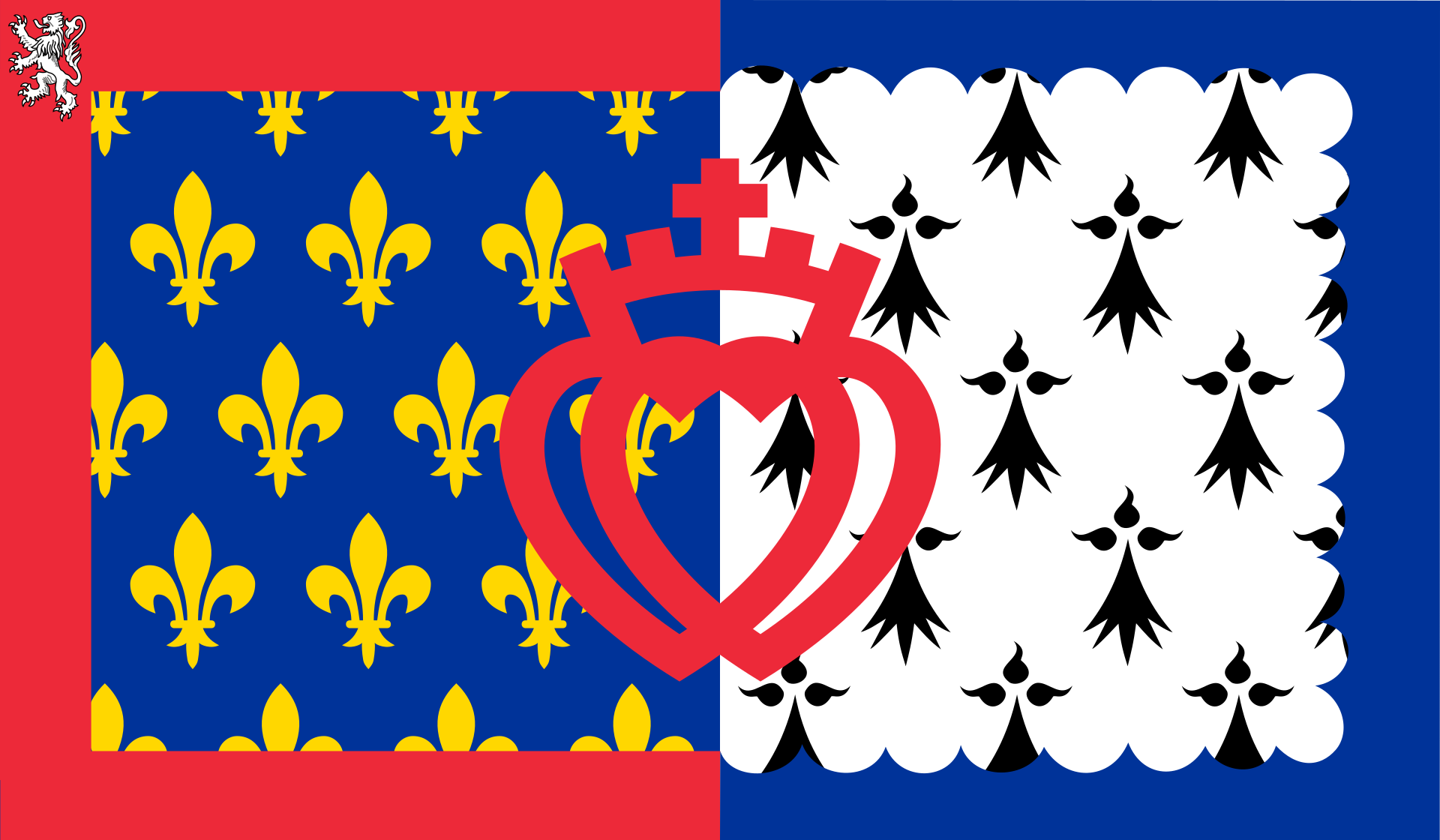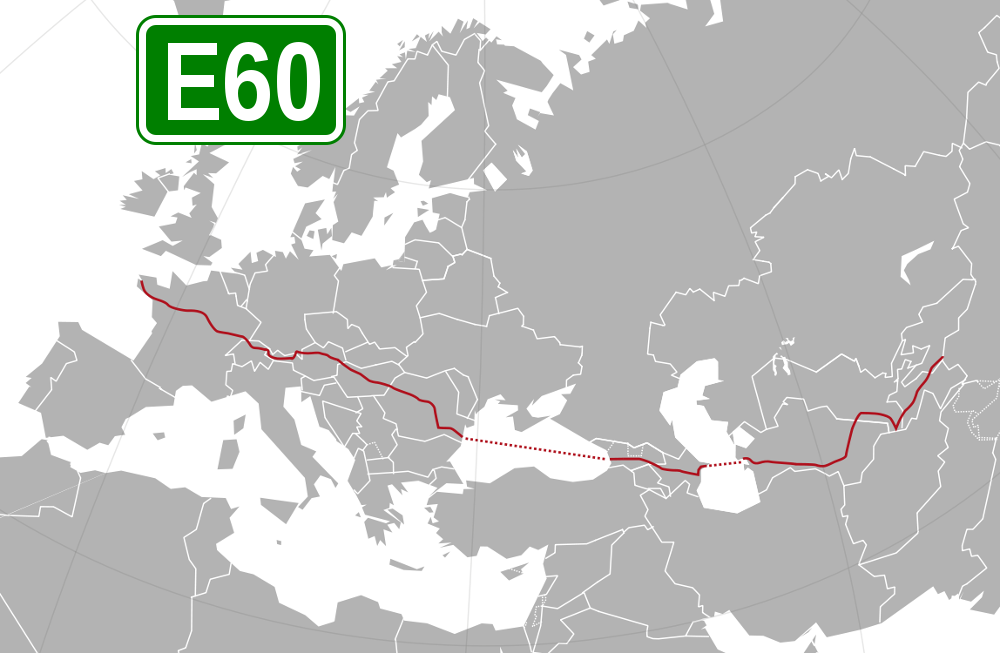
Deutsch-Chinesische Enzyklopädie, 德汉百科
 Xinjiang Uygur Zizhiqu-XJ
Xinjiang Uygur Zizhiqu-XJ





Die heutige Dsungarei (früher Ost-Dsungarei) ist eine Region im Nordwesten von China. Sie umfasst die nördliche Hälfte von Xinjiang (Sinkiang). Im Zentrum der Dsungarei liegt das Dsungarische Becken. Die größte Stadt ist Ürümqi (Urumchi/Urumtschi/Wulumuqi), sie liegt am Südrand dieses Beckens.
准噶尔盆地(蒙古语:ᠵᠡᠭᠦᠨ ᠭᠠᠷ,鲍培转写:jegün ɣar,西里尔字母:Зүүнгар ,意为“左手”)位于新疆的北部,是中国第二大的内陆盆地,在天山、阿尔泰山及西部的一些山脉之间。
准噶尔盆地位于新疆维吾尔自治区北部,西北为西准噶尔山,东北为阿尔泰山、青格里底山和克拉美丽山,南面为北天山山脉,四周为褶皱山系所环绕,呈现出东西长、南北宽的三角形封闭式的内陆盆地。地理坐标为N43°20′~46°50′,E82°30′~91°50′,东西长约700公里,南北宽约379公里,总面积约13.5万平方公里。
区内行政区划包括乌鲁木齐市、昌吉回族自治州、石河子市、塔城地区、博尔塔拉蒙古自治州、克拉玛依市、阿勒泰地区7个地、州、市,辖24个县(市)以及新疆生产建设兵团农五师、农六师、农七师、农八师、农九师、农十师、农十二师等,辖属77个农业团场(牧场)。
盆地四周绿洲经济带交通较为便利,国道312、216,217,乌一奎高速公路及北疆铁路分布于盆地四周,各乡镇均有公路相连,但沙漠腹地交通不便。

 Azerbaijan
Azerbaijan

 Bavaria
Bavaria

 Bourgogne-Franche-Comté
Bourgogne-Franche-Comté

 Bretagne
Bretagne

 Centre-Val de Loire
Centre-Val de Loire
 China
China
 Germany
Germany
 France
France
 Georgia
Georgia
 Kyrgyzstan
Kyrgyzstan
 Austria
Austria

 Pays-de-la-Loire
Pays-de-la-Loire
 Romania
Romania
 Switzerland
Switzerland
 Tajikistan
Tajikistan

 Tyrol
Tyrol
 Turkmenistan
Turkmenistan
 Hungary
Hungary
 Uzbekistan
Uzbekistan
 Xinjiang Uygur Zizhiqu-XJ
Xinjiang Uygur Zizhiqu-XJ


新疆生产建设兵团芳草湖农场下辖以下单位:
总场团部、一分场场部、一分场一队、一分场二队、一分场三队、一分场四队、一分场五队、二分场场部、二分场一队、二分场二队、二分场三队、二分场四队、二分场五队、二分场六队、三分场场部、三分场一队、三分场二队、三分场四队、三分场五队、三分场六队、三分场三队、四分场场部、四分场一队、四分场二队、四分场三队、四分场四队、四分场五队、四分场六队、五分场场部、五分场一队、五分场二队、五分场三队、五分场四队、五分场六队、五分场五队、六分场场部、六分场三队、六分场四队、六分场五队、六分场六队、六分场一队、四分场七队和六分场二队。

伊斯兰三大宗教节日之一。在伊斯兰历10 月1日。中国新疆地区的突厥语系穆斯林称肉孜节(Roza,波斯语,意为斋戒)。伊斯兰教法规定,伊斯兰历每年9月(莱麦丹月)为斋月,凡成年健康的男女穆斯林,都应全月封斋,即每日从拂晓至日落禁止饮食、娱乐和房事。封斋第29日傍晚如见新月,次日即为开斋节;如不见月,则再封一日,共30天,第二日为开斋节,庆祝一个月斋功圆满完成。
开斋节(阿拉伯语:عيد الفطر,拉丁化:ʿĪd al-Fiṭr,印尼语:Hari Raya Idul Fitri或者Lebaran,马来语:Hari Raya Puasa或者Hari Raya Aidilfitri),也称肉孜节(维吾尔语:روزا ھېيت)、尔代节 (哈萨克语:Ораза айт,وزارا ايت),是全球穆斯林庆祝斋月结束的节日,在伊斯兰历闪瓦鲁月的第一天(10月1日)。
开斋节这天,穆斯林一般很早起床,早祈祷后就可以吃一些东西,象征斋月结束。然后到清真寺去聆听教长吟诵古兰经,再集体朝着麦加的方向依礼敬拜。这一天穆斯林还会拜访亲友,互相拥抱问候,恢复朋友和亲友之间的联系。穆斯林在这一天都穿节日衣服,喜气洋洋。开斋节不仅是斋月的结束,而且是感谢阿拉(真主)使他们信仰更加坚定。是和平欢乐的节日。 从有伊斯兰历就有开斋节,第一次开斋节是先知穆罕默德和他的家人朋友亲自庆祝的。
开斋节对穆斯林的重要性相当于华人的农历新年节日。
Das Fest des Fastenbrechens oder ʿĪd al-Fitr (arabisch عيد الفطر, DMG ʿĪd al-Fiṭr  Aussprache?/i) ist ein islamisches Fest im unmittelbaren Anschluss an den Fastenmonat Ramadan in den ersten zwei bis vier Tagen des Nachfolgemonats Schauwāl. Je nach Land und Region gibt es Unterschiede in der Dauer und Art des Festes. Höhepunkt des Festes ist der erste Tag, der mit der Sichtung des Neumondes beginnt. Im Türkischen wird das Fest als Ramazan Bayramı ("Ramadan-Fest") oder Şeker Bayramı ("Zuckerfest") bezeichnet. Im malaiischen Sprachraum heißt es Hari Raya Aidilfitri ("Großer Tag des Fastenbrechens") oder Hari Raya Puasa ("Großer Tag [nach] dem Fasten"), in Indonesien wird es auch Lebaran genannt.
Aussprache?/i) ist ein islamisches Fest im unmittelbaren Anschluss an den Fastenmonat Ramadan in den ersten zwei bis vier Tagen des Nachfolgemonats Schauwāl. Je nach Land und Region gibt es Unterschiede in der Dauer und Art des Festes. Höhepunkt des Festes ist der erste Tag, der mit der Sichtung des Neumondes beginnt. Im Türkischen wird das Fest als Ramazan Bayramı ("Ramadan-Fest") oder Şeker Bayramı ("Zuckerfest") bezeichnet. Im malaiischen Sprachraum heißt es Hari Raya Aidilfitri ("Großer Tag des Fastenbrechens") oder Hari Raya Puasa ("Großer Tag [nach] dem Fasten"), in Indonesien wird es auch Lebaran genannt.

 Gansu Sheng-GS
Gansu Sheng-GS

 History
History
 Qinghai Sheng-QH
Qinghai Sheng-QH
 Sichuan Sheng-SC
Sichuan Sheng-SC
 Xinjiang Uygur Zizhiqu-XJ
Xinjiang Uygur Zizhiqu-XJ
 Xizang Zizhiqu-XZ
Xizang Zizhiqu-XZ
 Yunnan Sheng-YN
Yunnan Sheng-YN

格萨尔王传(藏语:གེ་སར་རྒྱལ་པོ་,威利:Ge-sar rgal-po,蒙古语:ᠭᠡᠰᠡᠷ
ᠬᠠᠭᠠᠨ),流行在西藏和中亚地区的著名史诗,目前在西藏、蒙古和土族中间尚有140位演唱艺人在说唱这部史诗。
格萨尔王传已经存在有一千多年,长达60万诗行,相当于印度史诗《摩诃婆罗多》3部长,《罗摩衍那》15部,是世界最长的史诗。讲述传说中的岭国国王格萨尔的故事,对藏传佛教影响很大。
格萨尔王传在目前有多达五十多种不同的版本,但仅中国大陆发行的藏文版本就已达到120册,分29章。而第一个印刷发行的版本是1716年,在北京发布的蒙古文版。
Gesar[1] ist ein epischer tibetischer König, dessen Heldentaten in von Barden vorgetragenen Gesängen, in ihrer Gesamtheit Gesar-Epos genannt, beschrieben werden. Dieses Epos gilt als der größte zentralasiatische Epenzyklus.
Dieses Korpus von Erzählungen enthält das Grundmotiv vom Kampf des guten tibetischen Herrschers Gesar, der als Mensch geboren wird, jedoch viele göttliche Fähigkeiten hat, gegen das Böse in der Welt. Gesars kriegerische und listenreiche Taten werden in ganz Zentralasien von Ladakh bis in die Mongolei, besonders aber in Osttibet, in Form von Gesängen tradiert, daher wird es meist Gesar-Epos genannt. Es existiert unter anderem in tibetischer, mongolischer (ᠭᠡᠰᠡᠷ
ᠬᠠᠭᠠᠨ ᠤ
ᠲᠤᠭᠤᠵᠢ, Гэсэрийн тууж) und türkischer Sprache. Die Vortragenden waren und sind z. T. noch spezielle Gesar-Barden, die teilweise Texte im Umfang dicker Bücher memorieren können.
Das Epos ist sehr umfangreich und nimmt seinen Anfang mit der Entstehung der Welt. Es wurde wahrscheinlich für eine Aufführung über mehrere Tage hinweg konzipiert.
The Epic of King Gesar[a] (/ˈɡɛzər, ˈɡɛs-/), also spelled Geser (especially in Mongolian contexts) or Kesar (/ˈkɛzər, ˈkɛs-/), is an epic cycle, of Tibet and greater Central Asia, believed to date from the 12th century, that relates the heroic deeds of the culture hero Gesar,[1] the fearless lord of the legendary kingdom of Ling (Wylie: gling). It is recorded variously in poetry and prose, through oral poetry performance, [2] it is sung widely throughout Central Asia and North East of South Asia. Its classic version is to be found in central Tibet.[3] Some 100 bards of this epic (Wylie: sgrung, "tale")[4] are still active today in the Gesar belt of China.[5] Tibetan, Mongolian, Buryat, Balti, Ladakhi and Monguor singers maintain the oral tradition and the epic has attracted intense scholarly curiosity as one of the few oral epic traditions to survive as a performing art. Besides stories conserved by such Chinese minorities as the Bai, Naxi, the Pumi, Lisu, Yugur[6] and Salar,[7] versions of the epic are also recorded among the Balti of Baltistan, the Burusho people of Hunza and Gilgit[6] and the Kalmyk and Ladakhi peoples,[8][9] in Sikkim, Bhutan, Nepal, and among various Tibeto-Burmese, Turkic, and Tungus tribes.[10] The first printed version was a Mongolian text published in Beijing in 1716.[11]
The epic is composed of a very large body of versions, each with many variants, and is reputed by some to be the longest in the world.[4] Although there is no one definitive text, the Chinese compilation so far of just its Tibetan versions has filled some 120 volumes, more than one million verses,[4] divided into 29 "chapters".[12] Western calculations speak of more than 50 different books edited so far in China, India and Tibet.[4]
L'épopée du roi Guésar — dit aussi Gesar Khan ou Gesar de Ling — est le poème épique le plus célèbre des populations tibétaines1, et mongoles.
Elle comporterait plusieurs millions de vers, ce qui en ferait l'œuvre littéraire la plus longue actuellement connue dans le monde. Composée il y a plus de huit siècles à partir de récits beaucoup plus anciens, elle est encore interprétée de nos jours par plusieurs dizaines de bardes dans les régions de populations tibétaines et mongoles.
L'épopée est inscrite au Patrimoine culturel immatériel de l'humanité depuis 2009 par l'UNESCO2.
L’Epica di Re Gesar, anche scritto Geser (particolarmente in contesti mongoli) o Gesser o Kesar, è un ciclo epico, ritenuto risalire al XII secolo, che racconta le gesta dell'eroe culturale Gesar [1], impavido signore del leggendario regno di Ling. Composto in varie forme di poesia e prosa aventi come stile tipico di rappresentazione lo shuochang cinese[2] e cantato in molte zone dell'Asia centrale e del nord est dell'Asia meridionale, la sua versione classica è rintracciabile nel Tibet centrale.[3] Un centinaio di bardi di questa narrazione epica[4] sono tuttora attivi nella cosiddetta "cintura Gesar" della Cina[5]. La tradizione è mantenuta viva da centinaia di cantastorie tibetani, mongoli, buriati, balti, ladakhi e tu ovvero mongour, e l'epica ha suscitato viva curiosità da parte degli studiosi come una delle poche tradizioni orali epiche sopravvissute in forma di arte performativa. Oltre agli intrecci conservati da minoranze cinesi come i bai, i naxi, i pumi, i lisu, gli iuguri[6] e i salar[7], ulteriori versioni dell'epica si riscontrano anche in Pakistan — tra i balti del Baltistan e i burúšo di Hunza e Gilgit [8], oltre che presso calmucchi e ladakhi[9][10], in Sikkim, Bhutan, Nepal, tra svariate etnie tibeto-birmane, popolazioni di lingue turche e tribù tunguse[11]. La sua prima versione stampata è stato un testo mongolo pubblicato a Pechino nel 1716.[12]
L'epica si compone di un amplissimo corpus di versioni, ciascuna delle quali a sua volta con molte varianti, e secondo alcuni sarebbe la più lunga del mondo.[13] Sebbene non esista un testo definitivo, l'attuale compilazione cinese soltanto delle versioni tibetane ha riempito 120 volumi, più di un milione di versi[14] divisi in 29 "capitoli".[15] Secondo conteggi occidentali, più di 50 libri sarebbero a questo punto pubblicati in Cina, India e Tibet.[13]
El rey Guesar es una epopeya tibetana. Es el escrito más largo del mundo, y actualmente el texto épico más antiguo que conserva vitalidad, y que se sigue recitando y ampliando oralmente hasta hoy en día.
 Sport
Sport
 Music charts
Music charts
 Musical instrument
Musical instrument
 Geography
Geography

 Transport and traffic
Transport and traffic
 Agriculture, forestry, livestock, fishing
Agriculture, forestry, livestock, fishing

 Literature
Literature